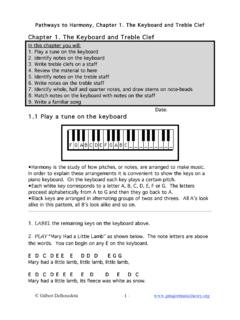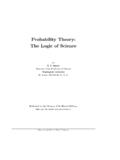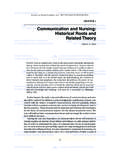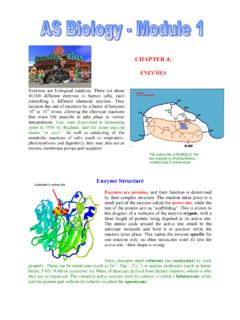Transcription of Chapter 4 Expanded. Major Scales and the Circle of Fifths
1 Chapter 4 expanded . Major Scales and the Circle of Fifths In this Chapter you will: half steps and whole steps on the keyboard 2. Identify half steps and whole steps on the staff 3. Write half steps and whole steps on the staff 4. Mark the notes of Major Scales on the keyboard 5. Mark the notes of Major Scales on a keyboard in the Circle of Fifths 6. Write phrases to memorize keynotes in the Circle of Fifths 7. Fill in the keys, in order, on the Circle of Fifths 8. Write Major Scales on the staff 9. Write the sharp Scales on a staff in the Circle of Fifths 10. Write the flat Scales on a staff in the Circle of Fifths Note: Extra pages have been inserted in this expanded version of Chapter 4.
2 Identify half steps and whole steps on the keyboard A half step is the closest possible distance between two notes. There can be no notes in between two notes which are separated by a half step. A whole step is a distance between two notes such that there is one and only one other note between those two notes. IDENTIFY the distances on the keyboard below as H for half step or W for whole step. Chapter 4, expanded : Major Scales and the Circle of Fifths 2 Identify half steps and whole steps on the staff The staff by itself does not show half step and whole step relationships.
3 See the illustration above. To find half steps and whole steps on the staff, refer to the keyboard. 1. FILL IN the letter names for the white keys on this keyboard. 2. IDENTIFY the pairs of notes as separated by either a half step (H), or a whole step (W), or as being enharmonic equivalents (E). Chapter 4, expanded : Major Scales and the Circle of Fifths 3 Practice recognizing whole steps and half steps 1. a. Label the pairs of notes on the keyboards as separated by half or whole steps. b. Write the letter names for both notes, including flats and sharps.
4 C. Draw the notes on the staffs below. 2. a. Write the letters, including flats and sharps, for the pairs of notes on the staff. If the two notes refer to the same key, put two dots on that key. b. Draw dots on the keyboard for each note. c. Identify the pair of notes as enharmonics (E) or as separated by a half step (H), a whole step (W). 3. Identify the following pairs of notes as separated by whole steps (W), half steps (H) or as being enharmonics (E). You must refer to a keyboard. Chapter 4, expanded : Major Scales and the Circle of Fifths 4 Write half steps and whole steps on the staff A sharp or flat applies to the note which follows it AND all the following notes of the same letter name in the measure.
5 1. IDENTIFY the bracketed pairs of notes as separated by either a half step (H), or a whole step (W). Refer to the keyboard. 2. WRITE notes which are a half step up or down, or a whole step up or down from the given note. Chapter 4, expanded : Major Scales and the Circle of Fifths 5 Practice writing half and whole steps 1. Fill in letter names on the keyboard below. Refer to the keyboard to answer the following problems 2. Write a note a half step up from the given note. 3. Write a note a half step down from the given note. 4. Write a note a whole step up from the given note.
6 5. Write a note a whole step down from the given note. Chapter 4, expanded : Major Scales and the Circle of Fifths 6 Mark the notes of Major Scales on the keyboard A key note is the most important note of a piece of music. Pieces almost always end on the key note. If eight notes of a piece are arranged in order without skipping lines or spaces and if the first note is the key note, then the notes form a scale . A Major scale is eight note in ascending order which are separated from each other according to this pattern: 1 2 3 4 5 6 7 8 whole whole half whole whole whole half step step step step step step step DRAW dots on the following keyboards for each note of a Major scale .
7 The key note is given. Chapter 4, expanded : Major Scales and the Circle of Fifths 7 Practice marking Major Scales on the keyboard 1. Write the sequence of whole steps (W) and half steps (H) between the numbers for the notes of the scale : 1 2 3 4 5 6 7 8 _____ _____ _____ _____ _____ _____ _____ 2. Write dots on the keys for the notes of Scales . The given dot is the first note. 3. Write a scale beginning with the note A. Chapter 4, expanded : Major Scales and the Circle of Fifths 8 , page 1 Mark scale degrees on a keyboard in the Circle of Fifths TURN THE BOOK (OR PAGE 7) UPSIDE-DOWN!
8 Each note of a scale is called a scale degree. scale degree 1 is the key note. If Scales are written clockwise on a circular keyboard or staff, and if the keynote of each scale begins on scale degree 5 of the previous scale , then the keynotes follow an order called the Circle of Fifths . DRAW dots for the notes of every scale on the circular keyboard on the next page. The C Major scale has already been marked where it says START HERE. Notice that if the key note is C, then the Major scale pattern 1 2 3 4 5 6 7 8 W W H W W W H results in all white keys. 1. The key note of the next scale to the left (be sure you have turned the page upside-down) is scale degree 5 of the C Major scale .
9 WRITE the letter name for this note in the box in the next section to the left. Its scale has also already been filled in. 2. COUNT to the fifth note in the new scale , WRITE its letter name in the next box and MARK its scale with dots on the keyboard. CHECK to see that the first note is the same as the last. 3. PROCEED in this way until you have gone all the way around the Circle and arrived at the C scale again. ROTATE the book as you work. When you reach sections of the Circle with two boxes for key notes, FILL IN enharmonically equivalent key notes. Incredibly all 12 different notes on the keyboard will have been used once and only once as key notes, and the original key note, C, will be the fifth note of the previous scale , In this way you will have completed a true Circle the Circle of Fifths .
10 Chapter 4, expanded : Major Scales and the Circle of Fifths 9 , page 2 TURN THE PAGE UPSIDE -DOWN! Chapter 4, expanded : Major Scales and the Circle of Fifths 10 Write phrases to memorize keynotes in the Circle of Fifths A piece based on a certain scale and key note is said to be in a certain key. The terms key and key note are often interchangeable. Memorize the order of keys in the Circle of Fifths by remembering the two phrases below. The first letter of each word is the letter of a key. 1. COMPLETE the phrases, Giant Dogs Always Eat Before Furry Cats and Five Big Elephants Are Dragging Garbage Cans which begin in the top right and left portions of the Circle below.











